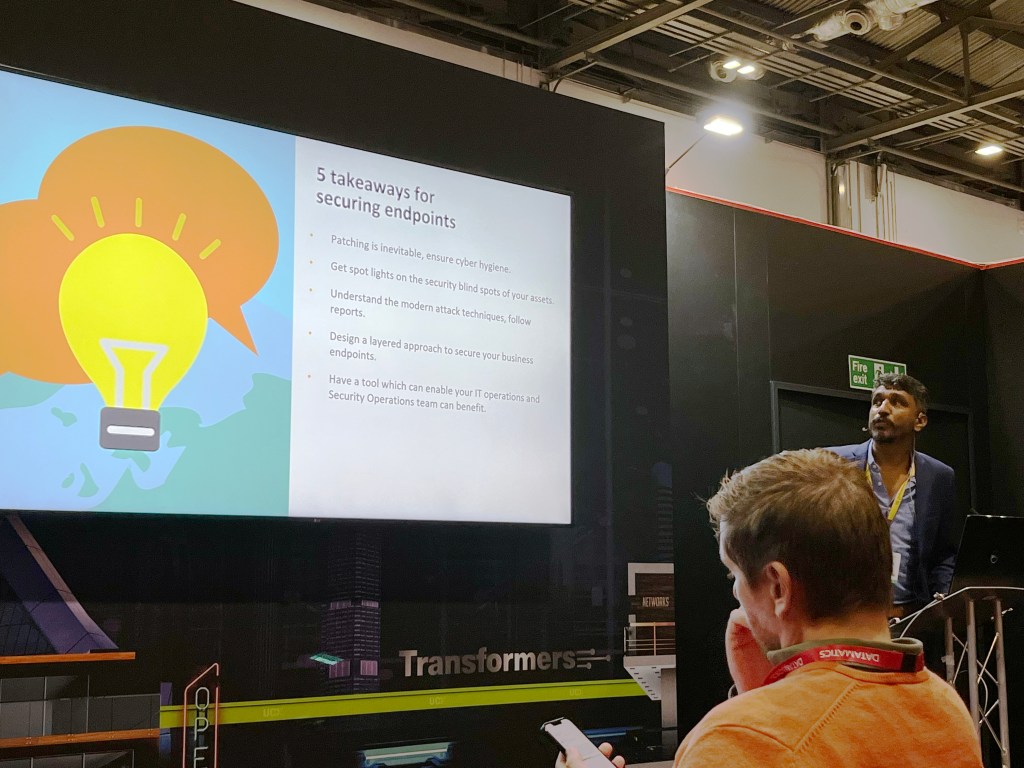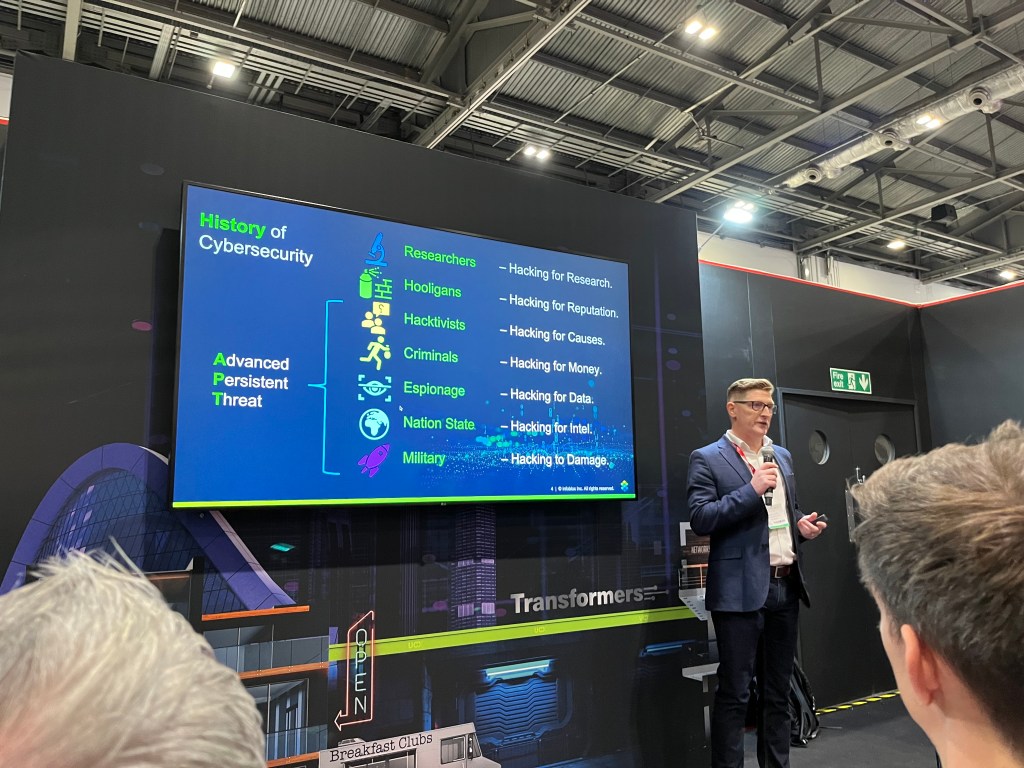Data breaches increased 182% from Q2 2022 to Q3 2022, and the trend is that ransomware will continue to grow. That was the warning from Romanus Prabhu Raymond, Global Head of Technical Support, Endpoint Management & Security at ManageEngine at the DTX Expo. His talk focused on ransom risks with endpoints and how to navigate from risk to resilience.
Endpoints are classified as any physical device that can be connected to a network, including computers, laptops, mobile phones, tablets and servers. And, said, Raymond: “Ransomware is the biggest threat to endpoints”.
He identified three trends that will have an impact on cybersecurity:
- A permanent change in the work culture.
- Endpoint security will become a top priority for enterprises.
- Ransomware will continue to be a threat.

There’s no type of business that’s at more risk than another, all types of businesses are targeted. Today, 70% of SMBs think that cyber threats are becoming more of a business risk.
“Ransomware is one of the most fearsome things a company can face,” continued Raymond.
Building resistance
The most important thing for a company to do is to make a threat analysis, find the threats and create an attack response. On building resistance, data has shown that bigger companies have more tools and security levels than small companies, and can detect faults and data breaches earlier.
He set down five takeaways for securing endpoints:
- Patching is inevitable, ensure cyber hygiene.
- Get spotlights on the security blind spots of your assets.
- Understand modern attack techniques, follow reports.
- Design a layered approach to secure your business endpoints.
- Have a tool which enables your IT operations and Security Operations team.
Adrian Louth, Cybersecurity Lead at Infoblox, explained the difference in threats and what different hackers are gunning for. Hacking started with researchers hacking for research or information, but today most hackers are being classified as APT’s (advanced persistent threats). That definition anyone who is hacking for causes, money, data, intel, or damage.

Photo: Martina Lindberg
There are typically two ways that hackers can use stolen data. Either sell it back to the company, and hopefully not leak it on the internet. Or sell it on the dark web.
It’s often thought that hackers use unique expert programs. But Raymond pointed out that most hackers are using free public programs that are available online for everyone to use. With that in mind, Raymond advised cyber security professionals with knowledge of how these programs work to “See the view from the hacker, find the gaps and block it.”
This is not a complete reproduction of what was said at this conference – it is an edited version based on the reporter’s understanding of what was relayed. This content has not been approved/endorsed by the speakers.













